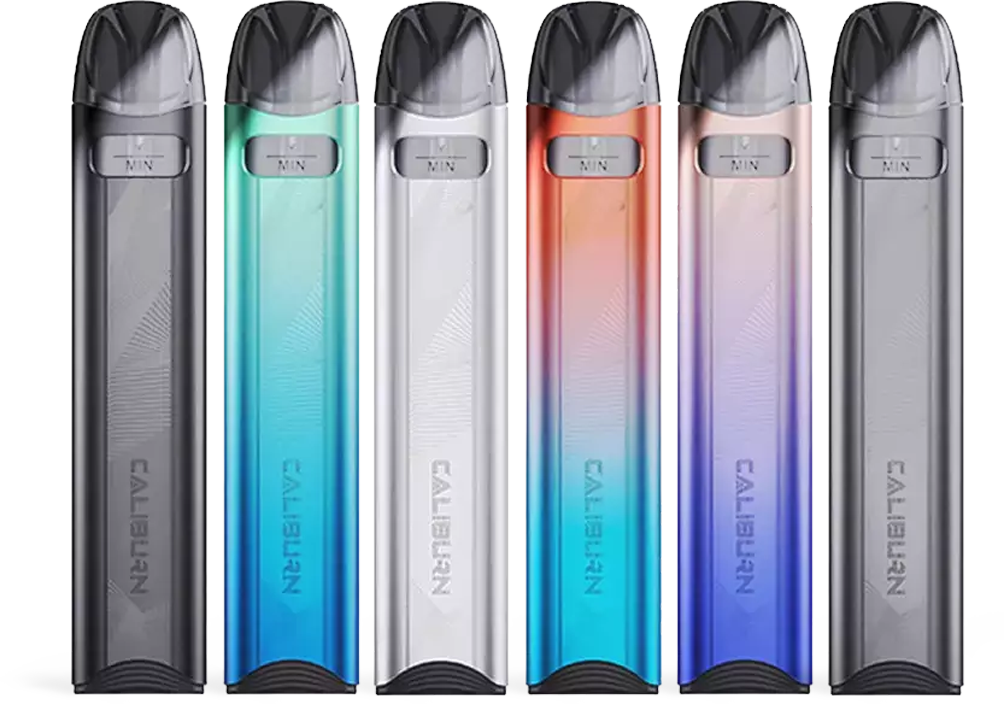Vaping Battery Safety

Vaping devices rely on lithium-ion batteries, which are powerful but potentially hazardous when not handled properly. While most vape batteries are safe when used correctly, misuse, poor maintenance, and improper charging can increase the risk of fires and explosions.
According to the FDA, the exact causes of vape battery explosions are still being studied, but most incidents are linked to battery malfunctions, improper storage, and using the wrong chargers. In extreme cases, battery explosions can cause severe burns, property damage, and injuries.
3 Quick Tips About E-Cig Battery Safety Guide: never carry loose batteries in pockets or bags, never leave a charging battery unattended, and only charge batteries with the provided chargers or cables and don’t mix different branded products.
okvape.co.uk
This guide will cover:
- How vape batteries work and why safety is important
- Common causes of vape battery fires and explosions
- Essential safety tips for handling, charging, and storing vape batteries
- How to choose the right battery and charger for your vape device
- What to do if your vape battery overheats or malfunctions
By following these battery safety guidelines, you can protect yourself and extend the lifespan of your vaping device.
How Vape Batteries Work and Why Safety Is Important
Most vape devices use rechargeable lithium-ion batteries, which are popular for their high energy capacity and efficiency. However, these batteries are also sensitive to heat, pressure, and improper handling, making battery safety essential.
A typical vape battery consists of:
- Anode and Cathode – The two ends of the battery that allow electricity to flow.
- Electrolyte Solution – The liquid inside the battery that helps generate power.
- Protection Circuitry (in regulated batteries) – Prevents overcharging and overheating.
When a vape battery is damaged, overcharged, or exposed to extreme conditions, it can go into thermal runaway, a chain reaction that leads to overheating, fire, or explosion.
Common Causes of Vape Battery Fires and Explosions
Most vape battery-related incidents happen due to user error or battery malfunction. According to reports from the U.S. Fire Administration, the most common causes of vape battery fires and explosions include:
1. Using the Wrong Charger
Charging a vape battery with an incompatible charger can lead to overcharging and overheating, increasing the risk of failure.
2. Carrying Loose Batteries in Pockets or Bags
When unprotected batteries come into contact with metal objects (such as coins or keys), they can short-circuit and ignite.
3. Overcharging or Overheating the Battery
Leaving a vape battery on the charger overnight or exposing it to high temperatures (such as inside a hot car) can weaken battery stability and lead to dangerous conditions.
4. Using a Damaged or Poor-Quality Battery
Batteries with dents, torn wraps, or leaks should be replaced immediately, as they pose a serious fire risk. Cheap, unregulated batteries from unknown manufacturers should also be avoided.
5. Modifying or Using Incompatible Batteries
Mixing different battery brands, using low-quality battery wraps, or attempting to modify vape batteries can lead to malfunctions and hazardous outcomes.
Are Vape Batteries Safe?
Yes, vape batteries are safe if we take good care of them.
We design and test vape batteries to ensure they can handle the amount of current they produce, and they’re tested again when put into use. But if you’re not careful, you could end up damaging your battery, or worse, causing an accident.
Can a Vape Battery Catch on Fire?
Vape batteries catching fire is a reasonable concern because many batteries can do just that, but it doesn’t have to be something you worry about.
Most vape batteries are similar to the ones used in laptops and cell phones. That means they can catch on fire if they’re damaged or used improperly. But that doesn’t mean all vape batteries are dangerous—it just means we have to treat them with care.
What Are the Dangers of Vape Pens?
One thing that is definitely not dangerous about vape pens is the vapor itself—it’s just natural tobacco that vaporizes. It’s totally harmless, as it can help you quit cigarette smoking. However, there are some other concerns you should know about when using vape pens.
When vaping, it’s easy to forget that your battery is a source of power—and power can be dangerous. Lithium-ion batteries have been known to catch fire in some situations. It’s important to follow the safety precautions that come with using them.
Mishandling or overcharging vape batteries can make them dangerous.
Second, there’s nicotine poisoning. Nicotine is addictive and poisonous if ingested in large quantities—this is why it’s dangerous for kids to chew on cigarettes or eat e-juice cartridges that have spilled on the floor (or had their caps left off). Keep all e-juice bottles out of reach of children and pets whose sweet smells may tempt them.
Why Do Vape Batteries Need to Be Wrapped?
A battery wrap prevents batteries from shorting and leaking all over your gear! It keeps them safe from getting damaged or lost while they’re not in use.
Most vape batteries are not designed to be exposed to moisture and cold. If you leave your battery out in the open air for too long, it can start to degrade and lose its charge faster than it should. This causes safety issues when the battery is exposed to moisture or other contaminants.
Replace the rechargeable batteries for your refillable device when they are damaged.
By wrapping your vape batteries in plastic wrap—and then putting them in an airtight container—you can protect them and extend their life.
Essential Vape Battery Safety Tips
1. Always Use the Correct Charger
- Use the manufacturer’s recommended charger for your device.
- Avoid phone chargers or generic USB adapters, as they may deliver incorrect voltage.
- Do not overcharge – Remove the battery once fully charged.
2. Store Batteries Safely
- Never carry loose batteries in your pocket or bag—use a battery case instead.
- Store batteries in a cool, dry place, away from direct sunlight or heat sources.
- Keep batteries away from metal objects like keys, coins, or tools.
3. Inspect Your Batteries Regularly
- Check for any damage, swelling, or torn battery wraps.
- If a battery looks damaged or leaks, stop using it immediately and dispose of it properly.
- Only buy high-quality, authentic batteries from reputable brands.
4. Charge Your Batteries Properly
- Never leave a vape battery charging unattended or overnight.
- Avoid charging on flammable surfaces (e.g., beds, couches, or carpets).
- Do not charge your vape device in extreme temperatures (hot or freezing).
5. Use the Right Batteries for Your Device
- If using a mod with removable batteries, ensure the batteries are compatible with the wattage and coil resistance.
- Avoid using low-quality or rewrapped batteries—stick to well-known brands like Sony, Samsung, or LG.
6. Dispose of Batteries Safely
- Do not throw vape batteries in the trash—take them to a recycling center.
- If a battery is damaged, store it in a fireproof battery bag before disposal.
What to Do If Your Vape Battery Overheats or Malfunctions
If your vape battery becomes excessively hot, follow these steps to prevent a fire or explosion:
- Immediately stop using the device and turn it off.
- Remove the battery from the device (if possible).
- Place the battery in a safe, non-flammable area, such as a metal container.
- Do not charge the battery again—it should be replaced.
- If the battery begins smoking or catching fire, use a fire extinguisher or sand—never use water on a lithium-ion battery fire.
FAQ’s
Are vape batteries safe to use?
Yes, vape batteries are generally safe to use when handled correctly and purchased from reputable brands. Most vape devices use lithium-ion batteries, which are the same type found in laptops, smartphones, and electric cars. These batteries are designed to deliver high power efficiently, but misuse can lead to overheating, fires, or even explosions.
To ensure safety, always:
- Use high-quality batteries from trusted brands (such as Sony, Samsung, or LG).
- Follow manufacturer guidelines for charging and handling.
- Store batteries properly in a case and avoid extreme temperatures.
- Inspect batteries regularly for damage or wear.
Can a vape battery catch fire?
Yes, a vape battery can catch fire or explode if mishandled, overcharged, or short-circuited. Fires occur due to a process called thermal runaway, where the battery overheats and rapidly releases stored energy.
The most common causes of vape battery fires include:
- Overcharging – Leaving the battery plugged in too long can cause overheating.
- Short circuits – Carrying loose batteries in a pocket with metal objects (coins, keys) can cause sparks.
- Physical damage – Dropping or puncturing a battery can rupture its internal structure.
- Using the wrong charger – Incompatible chargers can deliver too much power, leading to overheating.
- Exposure to extreme temperatures – Leaving a vape device in a hot car or near direct sunlight can weaken the battery’s safety features.
To prevent battery fires, always use the correct charger, avoid carrying unprotected batteries, and store them in a cool, dry place.
What are the most important vape battery safety tips?
Proper vape battery safety ensures a safer vaping experience while extending battery lifespan. Here are the most essential tips:
- Use the Right Charger – Always use the charger that comes with your device or one recommended by the manufacturer. Avoid fast-charging adapters, as they may cause overheating.
- Never Overcharge – Remove the battery from the charger once it’s fully charged. Leaving it plugged in overnight increases the risk of battery failure.
- Store Batteries Safely – Keep them in a battery case instead of pockets or bags where they can contact metal objects.
- Inspect Batteries Regularly – Look for damaged wraps, dents, or swelling. If the battery appears damaged, stop using it immediately.
- Avoid Extreme Temperatures – Do not leave batteries in hot cars or expose them to direct sunlight for long periods.
- Never Use Wet or Leaking Batteries – If your battery gets wet or starts leaking, dispose of it safely at a recycling center.
- Use Batteries That Match Your Device – If using a mod with removable batteries, ensure the battery matches the wattage and resistance requirements.
- Dispose of Old Batteries Properly – Do not throw batteries in the trash; instead, recycle them at a proper facility.
Following these safety tips will help prevent fires, malfunctions, and accidents.
How should I store my vape batteries?
Proper storage is crucial for vape battery safety. To keep your batteries in good condition, follow these guidelines:
- Use a Battery Case – Never carry loose batteries in pockets or bags where they can touch metal objects and short-circuit.
- Keep Them in a Cool, Dry Place – Store batteries away from direct sunlight, extreme heat, or cold temperatures. Ideal storage temperature is between 50°F – 77°F (10°C – 25°C).
- Avoid Moisture and Water – Do not store batteries in humid environments or near liquids.
- Keep Away from Flammable Materials – Batteries should be stored away from flammable objects such as fabrics, paper, or aerosols.
- Charge in a Safe Location – Always charge batteries on a flat, fire-resistant surface, such as a ceramic countertop.
Why should I avoid keeping batteries near metal objects like keys or coins?
Keeping vape batteries near metal objects (such as keys, coins, or loose change) can lead to a dangerous short circuit, causing:
- Sparks – A direct connection between the battery terminals and metal can create sparks, potentially igniting a fire.
- Overheating – A short circuit can cause the battery to heat up extremely fast, leading to thermal runaway.
- Battery Explosion – In extreme cases, short-circuiting a vape battery can cause it to vent gas, catch fire, or explode.
To prevent this, never carry loose vape batteries in your pocket. Instead, use a plastic or silicone battery case to keep them protected when traveling.
How often should I replace my vape battery?
The lifespan of a vape battery depends on how often you use it and how well it is maintained. However, as a general rule:
- Internal (built-in) vape batteries last 6 months to 1 year before they start losing efficiency.
- Removable (18650, 20700, or 21700) batteries should be replaced every 6 to 12 months or after 300 to 500 charge cycles.
Signs that it’s time to replace your battery:
- The battery drains faster than usual.
- It takes longer to charge.
- The device doesn’t hold power as well as before.
- You notice physical damage, swelling, or leakage.
If your battery is showing signs of wear, replace it immediately to avoid safety risks.
How do I know if my vape battery is damaged?
A damaged vape battery can be extremely dangerous and should be replaced immediately. Look out for these warning signs:
- Dented or deformed battery casing – Physical damage weakens the internal structure.
- Torn battery wrap – Exposed metal parts increase the risk of short circuits.
- Battery swelling or bulging – A swollen battery is unstable and at risk of explosion.
- Overheating during normal use – If your battery gets abnormally hot, it could indicate a failing cell.
- Leaking fluid or corrosion – A leaking battery should be disposed of immediately at a recycling center.
If you notice any of these signs, stop using the battery and replace it with a high-quality, authentic battery from a reputable brand.
What should I do if my vape battery gets wet?
If your vape battery gets wet, follow these safety steps:
- Immediately remove the battery from the device.
- Do not attempt to use or charge it—water can damage internal components.
- Dry the battery with a clean towel, but do not heat it or expose it to direct sunlight.
- If water reached the battery’s internal parts, dispose of it immediately at a proper battery recycling facility.
Even if the battery appears dry on the outside, moisture inside the casing can cause internal damage, leading to malfunctions. It’s best to replace the battery to avoid any potential safety risks.
Final Thoughts: Vape Battery Safety Shouldn’t Be Overlooked
Vape battery safety is crucial for preventing fires, injuries, and damage to your device. By following proper handling, charging, and storage guidelines, vapers can significantly reduce the risks associated with lithium-ion batteries.
Key Takeaways:
- Always use the correct charger and avoid overcharging.
- Store batteries in protective cases, not in pockets or bags.
- Regularly check batteries for damage and replace worn-out ones.
- Keep your device away from heat and flammable objects.
By following these essential safety tips, you can ensure a safe and enjoyable vaping experience.
Looking for premium e-liquids to pair with your safe vaping setup? Explore Black Note’s naturally extracted tobacco e-liquids, crafted for quality, purity, and an authentic tobacco experience.
Black Note offers the safest vaping eLiquids and vaping devices that we believe will go a long way in helping you stay a better life! To get more tips on healthy vaping, read our articles and subscribe to our email newsletter for timely updates.
Stay connected with Black Note!
Subscribe to receive exclusive discounts, expert vaping tips, and updates on the latest devices directly to your inbox.







